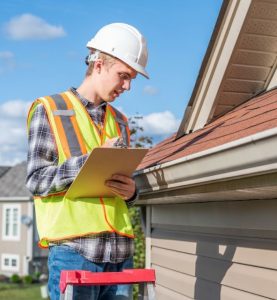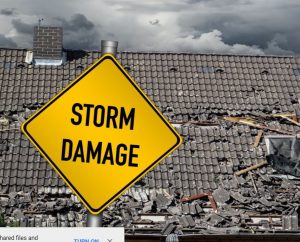How To Properly Inspect Your Roof For Wears And Damages
Guest Post
 The roof is your protection from rain, snow, tree branches, and other debris.
The roof is your protection from rain, snow, tree branches, and other debris.
If it’s in poor shape, your home can get leaks, develop molds, and undergo other problems.
Inspecting the roof for wear and tear is something you need to consider either periodically or after a major storm.
Not only does it ensure that everything is still intact, but it also guarantees the safety of your family.
You can also reduce the cost of having your roof replaced in the future by knowing that you will always have a roof that’s in good shape.
Check If The Roof Needs To Be Replaced
Inspect if your roof needs some repairs.
One visible area is the shingle as it often becomes worn away by time and moisture.
This should be looked at as soon as possible as the moisture may cause cracks and leaks.
Repairs can then be made to any holes that may appear from the water leaking out.
Tell-tale signs that you have a damaged roof would be a leak inside the house coming from the ceiling, or visibly damaged shingles on your roof.
Sometimes the damage is not easy to see, and requires you to inspect your roof via the attic, getting a look underneath, which can help you identify growing cracks or even rot.
You may also want to replace your roof with something that’s better suited to your climate.
 For example, if your roof is worn out, you may want to look into using slate or other materials that will be less expensive to have installed.
For example, if your roof is worn out, you may want to look into using slate or other materials that will be less expensive to have installed.
It is also a good idea to contact a roofing contractor like jacksoncontractingsite.com.
They can help you figure out what repairs you need to do and how to do them. However, if you find your roof too damaged, you should install a new one.
Use Specialized Tools
While the roof is not actually being replaced, it’s still important to examine it thoroughly and ensure that there are no hidden problems that may arise.
This can be done by either making use of a specialized tool known as a roofing inspection camera or by simply having someone else inspect the roof for you.
Either way, there are a number of areas that need to be checked.
Some tools that are essential for a roof inspection are:
-
- Shingle remover
- Toolbelt
- Retractable utility knife
- Hammer tacker
- Measuring tape
- Roofing ladder
- Roofing snake
- Moisture meter
- Magnetic pickup tool
If you have these items, then you should be able to complete a roof inspection with ease, and if you don’t, then they’re not difficult to acquire as you can purchase them at any hardware store near where you live.
You also have to use certain types of personal protective equipment to reduce the chances of injury.
Identify Roof Rot
Roof rot occurs when there’s moisture buildup in your roof.
The water could have been coming from rain or snowfall over several days.
Once it has soaked in the area, it starts to harden on the materials as it warms up.
As this hardening process begins to take place, the materials will start to decay.
You can find rot in many different areas of your roof, including around eaves and around vents that are not properly ventilated.
If the damage or rot is only visible on the inside, you need to inspect the underside of the roof to see if you have any pockets where water is leaking.
If this is the case, you may need to repair the leak on the roof.
Remember that a roof can last several years, but if you have a roof that becomes worn and damaged, you can expect to spend a lot of money for repairs down the road.
Conclusion
Roofs wear out over time because they get weathered down by the elements and don’t hold up as well as they once did.
The leading cause for this is that their water and moisture protection become compromised as the seasons change.
It can be because of a broken shingle, a leaking ceiling fan, or just because there’s no way for your roof to effectively dissipate the heat or cold.
Regardless of the reason that your roof needs to be repaired or replaced, you need to know what the repairs will cost and make sure that the roofing contractor that you hire can do a good job.
The last thing you’d want is to end up with shoddy work on your roof and find that it needs to be replaced entirely.